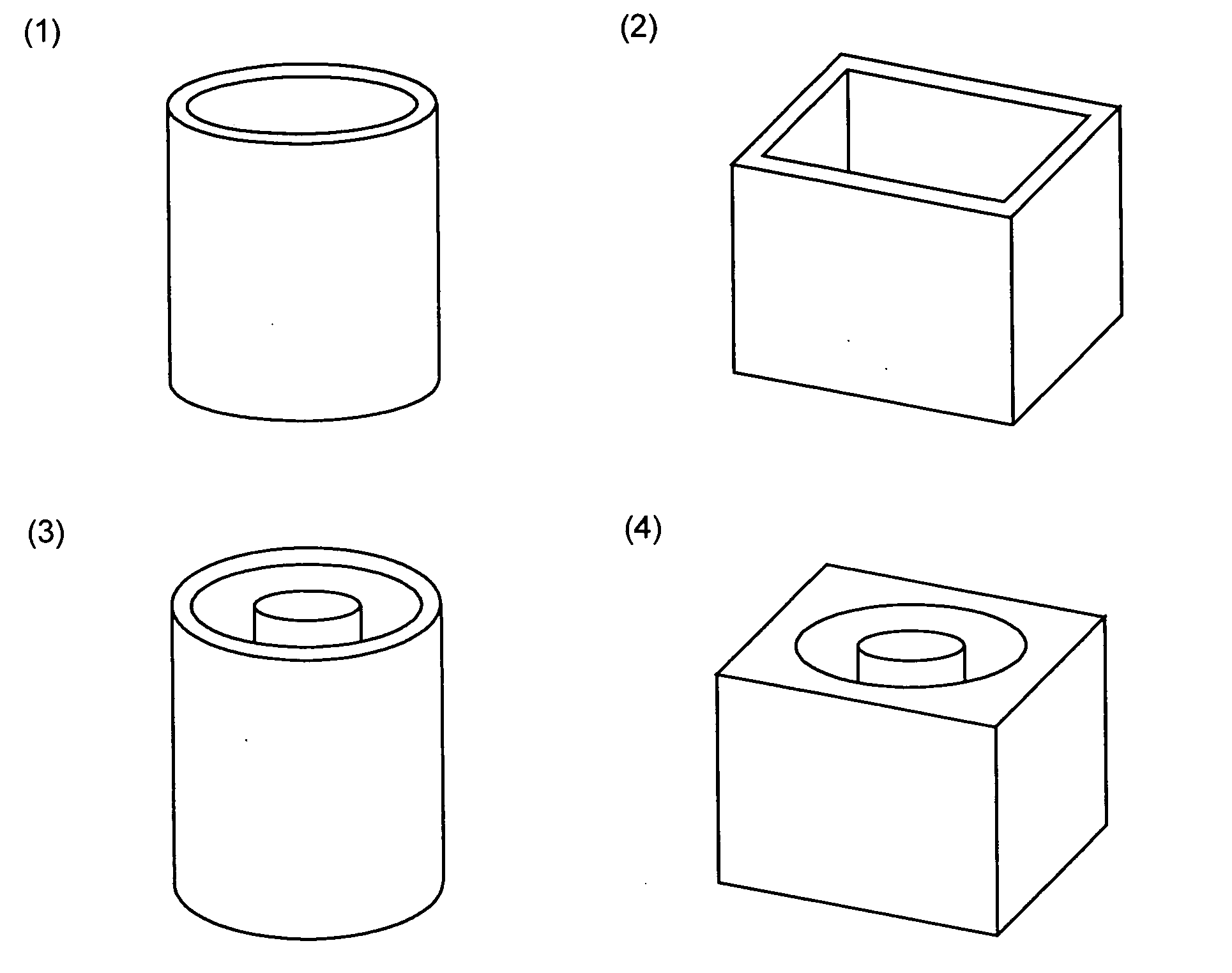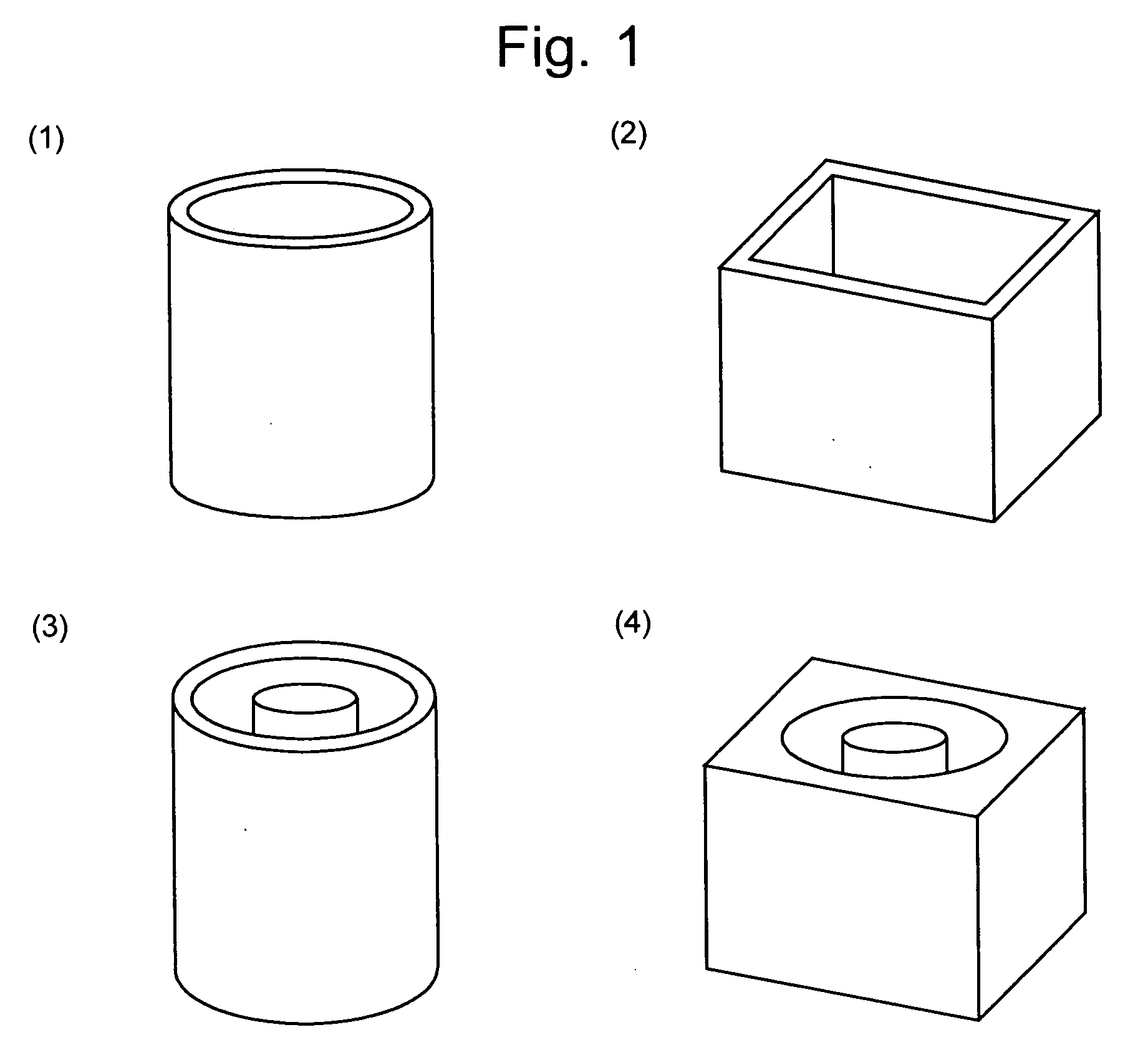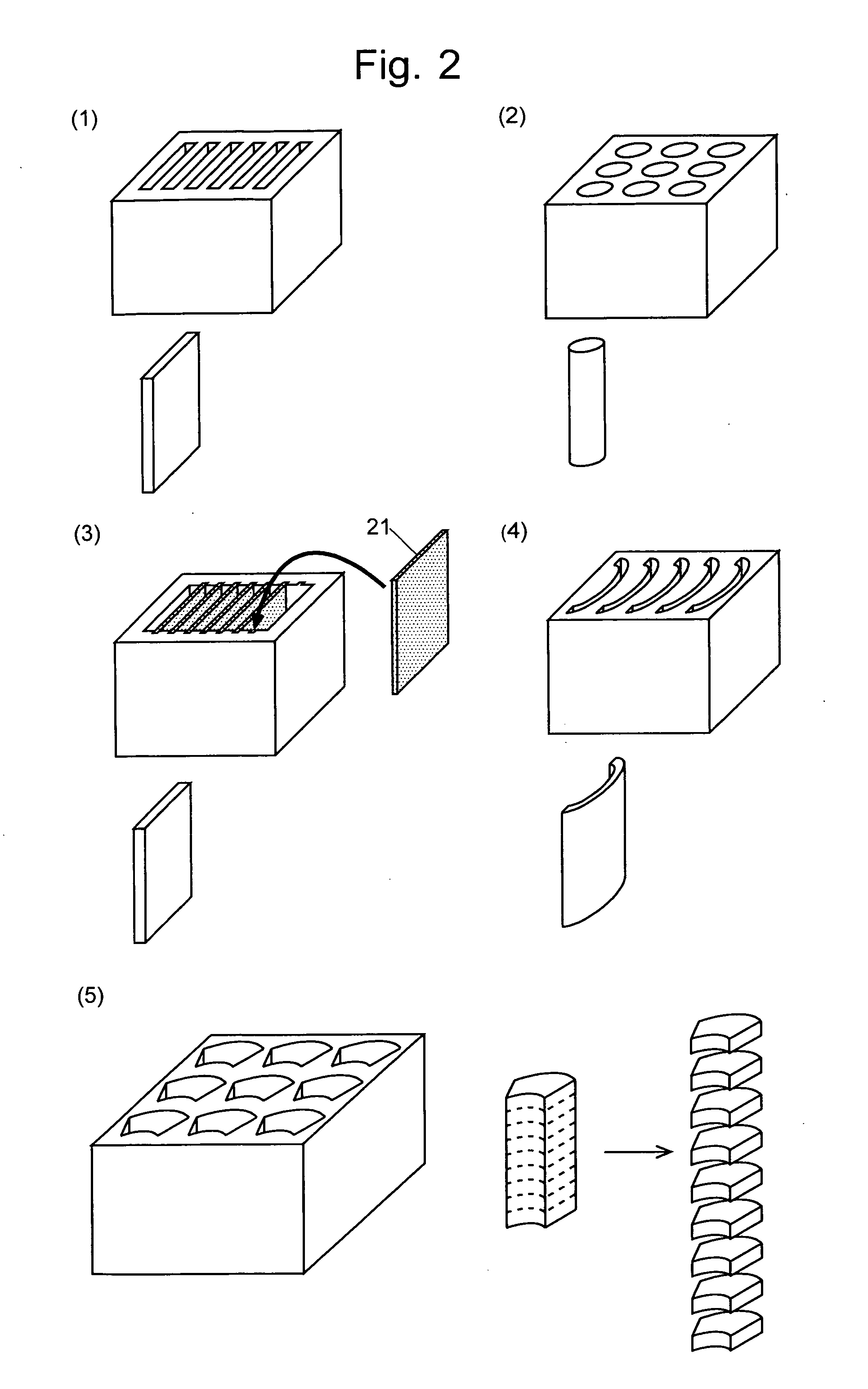Method and System for Manufacturing Sintered Rare-Earth Magnet Having Magnetic Anisotropy
- Summary
- Abstract
- Description
- Claims
- Application Information
AI Technical Summary
Benefits of technology
Problems solved by technology
Method used
Image
Examples
embodiments
[0234] [Mold]
[0235] Preferably, the mold should be made of a material that can withstand the high sintering temperature (up to 1100 degrees Celsius). In the course of pre-heating the mold, the particles loosely combine with each other, whereby the object to be sintered becomes able to sustain its shape. In this preliminary sintered state, a portion or the entirety of the mold can be removed so that the preliminary sintered body can be set into another mold or onto a bedplate. The preliminary sintering temperature is preferably from 500 degrees Celsius to a level that is 30 degrees Celsius lower than the sintering temperature. The mold used in the preliminary sintering process can be made of any material that withstands the above temperature range.
[0236] Examples of the mold material include iron, iron alloy, stainless steel, permalloy, heat resisting steel, heat resisting alloy and superalloy; molybdenum, tungsten and their alloy; and ferrite, alumina and other ceramics.
[0237] [Co...
PUM
| Property | Measurement | Unit |
|---|---|---|
| Grain size | aaaaa | aaaaa |
| Grain size | aaaaa | aaaaa |
| Grain size | aaaaa | aaaaa |
Abstract
Description
Claims
Application Information
 Login to View More
Login to View More - R&D
- Intellectual Property
- Life Sciences
- Materials
- Tech Scout
- Unparalleled Data Quality
- Higher Quality Content
- 60% Fewer Hallucinations
Browse by: Latest US Patents, China's latest patents, Technical Efficacy Thesaurus, Application Domain, Technology Topic, Popular Technical Reports.
© 2025 PatSnap. All rights reserved.Legal|Privacy policy|Modern Slavery Act Transparency Statement|Sitemap|About US| Contact US: help@patsnap.com



